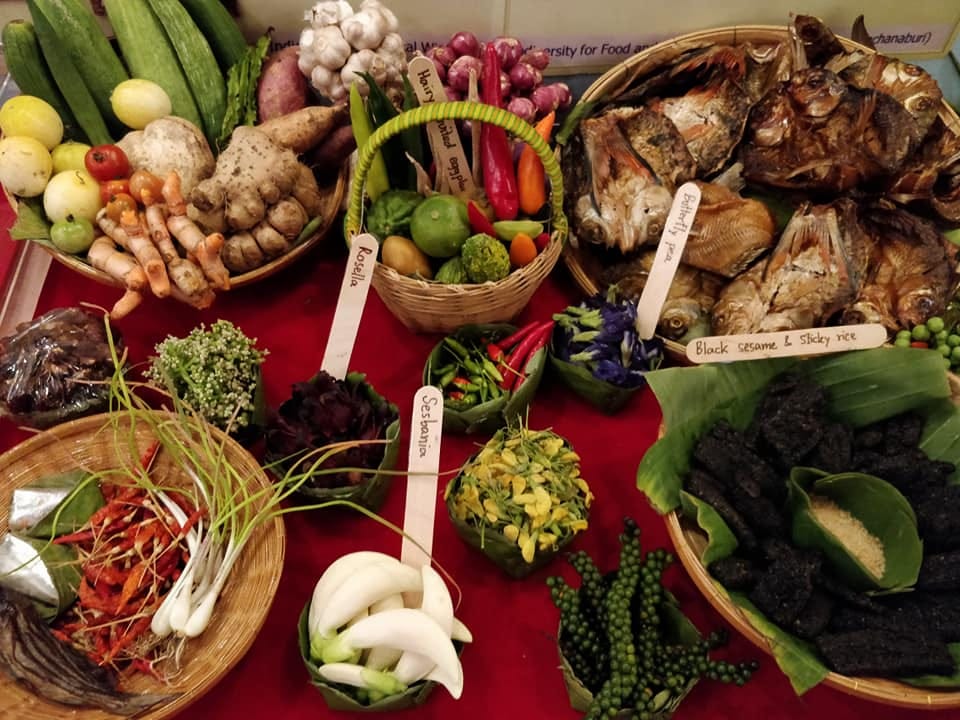Introducing: Thin Ink
A newsletter about food systems, climate change and everything connected to them
Food - a four-letter word that humans owe their life to. Literally. If we are fortunate, we get to eat 3 meals a day. If you’re even more fortunate, we get to choose what we eat.
Having been born and raised in an agrarian country - Myanmar, the country formerly known as Burma - I saw the crucial role farming plays in a nation’s well-being. I’ve also seen first hand what people are willing to do when they, and often more importantly, their loved ones, are going hungry.
But food is more than just sustenance. It is also intricately linked to our cultures, traditions and identities. Tastes and smells transport us to places and people long buried in our sub-consciousness. Personally, a good meal is a great salve to most problems.
Yet the way we are currently producing and consuming food is not sustainable.
It is environmentally destructive (think cutting down trees to expand farm land, raising ruminants that burp potent greenhouse gas methane, using nitrogen fertilisers that emit another potent greenhouse gas nitrous oxide, and so on…), inequitable (some of the poorest people in the world are small scale farmers and they are extremely vulnerable to the kind of climate impacts caused mainly by rich countries, and women farmers in particular face multiple levels of discrimination) and frankly, what we eat is killing us (unhealthy diets are one of the top causes of mortality).
These are not new problems but COVID-19, by tipping millions more into hunger as they lose their jobs and purchasing power, has shown how fragile our ‘food systems’ are, how hunger and malnutrition are not limited to developing nations, and how urgently they need to be transformed.
Now, ‘food systems’ is a term you’ll be hearing a lot and The Oxford Martin Programme on the Future of Food has one of the best explanations on what it is - a wide umbrella that “includes not only the basic elements of how we get our food from farm to fork, but also all of the processes and infrastructure involved in feeding a population”.
As someone who loves to eat but also cares about the environment and equity issues, I think food, climate change and the nexus between them are some of the biggest challenges humanity is facing today. And this newsletter is part of journalistic offerings I’m planning on these issues. If you are not familiar with my work, you can find more about me here and see my previous articles here.
This will be a weekly newsletter, at least initially, sent every Friday where I will share links and thoughts on interesting studies, reports and articles, some of which may be written by me. Feedback is very much welcome. I want this to be as accessible to anyone who is interested in food (geo-politics, sustainability, eating, consuming, the business of food) and climate change and everything in between whether you are a professional in this space or just interested personally.
And while the topic can be heavy and depressing, I plan to highlight both problems and solutions and for all the challenges of 2020, I am cautiously hopeful and optimistic for 2021. Here’s why:
1. A flurry of summits after a terrible year
There are a few high-profile summits scheduled this year, some postponed from 2020, that will bring these interlinked issues of climate change and food systems into sharp focus.
The Food Systems Summit, slated for September, will be tackling these issues head on, but there’s also the Conference of the Parties for the Convention on Biological Diversity, which will determine the key framework on how to better protect nature by 2030 and 2050 and the climate negotiations where the new Biden administration is expected to actively participate. Conferences on oceans and nutrition are also planned.
Of course, just because these events are happening doesn’t mean change will happen and there are questions on governance and inclusivity, like the ones raised by the U.N. Special Rapporteur on Right to Food on the Food Systems Summit.
Still, the traumas of COVID-19 are still fresh in world leaders’ minds and civil society, technical experts and consumers are in general agreement over changes that are needed. So 2021 has the potential to become the year the world came together to save the planet and our food systems.
2. Societal tipping points may be closer at hand than we realise
Polls in the U.S. and Europe have consistently showed people are worried about and want to take action on climate change, and we might actually be at a stage where people are willing to change their behaviour, like taking fewer flights, eating less meat, wasting less food, and giving more thought to sustainability when buying goods, including food.
Again, some of this seems to be a result of COVID-19 - see this article I recently wrote - and intentions often do not translate into actual actions, but this is a good start.
3. Innovations
We are learning more and more about the microbiome - the vast community of microbes living inside humans, particularly in the gut, as well as in the soil - and how it affects our health and plants’ health. Scientists believe these discoveries can greatly aid better ways of growing and consuming food.
Speaking of soil, the kind of farming that looks to restore and improve soil quality, whether you want to call it regenerative agriculture, agroecology or conservation agriculture, is likely to get even more attention this year. I recently interviewed Al Gore about it.
In December, Singapore’s regulatory authorities approved lab-grown chicken for sale, making history as the first country in the world to do so. In November, Super Meat opened a test kitchen near Tel Aviv serving cultured chicken burgers. And look out for more food products made through precision fermentation, after the success of Perfect Day’s dairy-free ice-cream.
So there you go. I look forward to what 2021 will bring.
Thanks for reading the first issue of my newsletter and I will start my regular Friday post tomorrow (Jan 21).
Please feel free to share this post and send tips on twitter @thinink, to my LinkedIn page or via e-mail thin@thin-ink.net.





Delighted that you're launching this, Thin!! I have a question about where disposal fits in. I see in the linked Food Systems article that the 2018 FAO definition includes disposal in the narrative but the diagram on the next page omits it. It seems to me that disposal--food waste, food production waste, and sanitation--need to be figured into the system if resilience/sustainability/harmony are the objective. Would love to hear your thoughts on that!
This is really good, Thin. I will look forward to Fridays even more now.